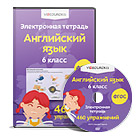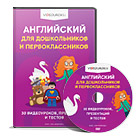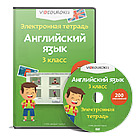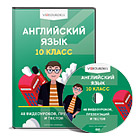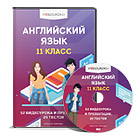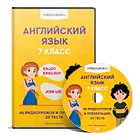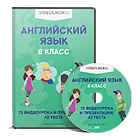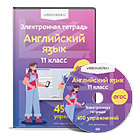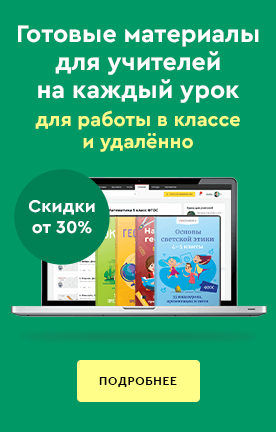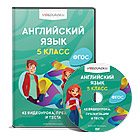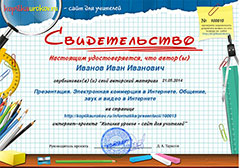| Long-term plan unit: 1 HOBBIES AND LEISURE | School-gymnasium named after Abay |
| Lesson 1 |
|
| Date: 3.09.2018 | Teacher’s name: Alibekova |
| CLASS: 5 | Number present: | absent: |
| Theme of the lesson: Welcome to school again! Diagnostic test |
|
|
| Learning objective (s) that this lesson is contributing to | • identification of levels for later work • reinforcement of learning and pupil motivation • identification of problem areas |
| Lesson objectives | All learners will be able to: |
| Most learners will be able to: |
| Some learners will be able to: |
| Success criteria | 7.1.9.1- use imagination to express thoughts, ideas, experiences and feelings 7.6.1.1- use some abstract nouns and complex noun phrases on a limited range of familiar general and curricular topics; |
| Value links | Cooperation, lifelong learning |
| Cross curricular links | Geography |
| ICT skills |
|
| Previouslearning | Themes from the Grade 6 curriculum |
| Plan |
| Stages of the lesson | Planned activities (replace the notes below with your planned activities) | Teacher’s notes |
| Greeting
| The teacher greets students; students respond to greeting and take their places. Hello, boys and girls! How are you? |
|
| Warm up | • Books closed. T writestheme park on the board. Checks that students understand that this is a park with lots of rides which has a particular theme or setting, e.g. Disneyworld in Florida. • Students find out which theme parks they have been to and what they thought of them | Background The modern rollercoaster was invented by an American inventor and businessman called La Marcus Adna Thompson. Known asa Switchback Railyway, it opened at Coney Island in New York in 1884. |
| Practice | • T asks students to open their books at page 4. • Elicits sentences to describe the photo, which shows people going round the loop of a rollercoaster. Finds out who enjoys going on rollercoasters and who dislikes them. Also finds out why students hold their opinions. • T gives students a couple of minutes to answer the three questions. • Students can then compare their answers in pairs before you check answers with the class. • T tells students that the theme of Unit 1 is the different ways that people enjoy themselves. | Suggested answers • I think that they are excited about the ride, but they must be scared, too. • I usually hang out with my friends after school or at the weekend. We often meet at home and play video games. Sometimes we go to the cinema. • The best day out I’ve ever had is my last birthday. My parents took me and my sister to a theme park. I got great presents, too. |
| Diagnostic test | For identification of levels for later work, reinforcement of learning and pupil motivation, identification of problem areas have a 10 minute diagnostic test. |
|
| Additional Information |
| Differentiation - how do you plan to give more support? How do you plan to challenge the more able learners? | Assessment - how are you planning to check learners` learning? | Health and safety check ICT links |
| More support will be given to weaker learners by giving them a modified worksheets in some tasks with greater support | -through questioning and the redirecting of questioning in feedback activities -through observation in group and end performance activities -through formative task
| -White board and video is used no more than 10 minutes -Use water based pens -Health promoting techniques -Breaks and physical activities used. -Points from Safety rules used at this lesson. |
| REFLECTION
| Answer the most relevant questions to reflect on your lesson. Were the lesson objectives/learning objectives realistic? What did the learners learn? What did/didn’t you like? What was difficult? |
| Long-term plan unit: 1 HOBBIES AND LEISURE | School: |
| Lesson 2 |
|
| Date: | Teacher’s name: |
| CLASS: | Number present: | absent: |
| Theme of the lesson: Free time activities |
|
|
| Learning objective (s) that this lesson is contributing to | • learn phrases for free time activities • talk about the free time activities that they enjoy doing |
| Lesson objectives | All learners will be able to: |
| Most learners will be able to: |
| Some learners will be able to: |
| Success criteria | 7.1.3.1- respect differing points of view; 7.1.4.1- evaluate and respond constructively to feedback from others; 7.2.1.1- understand with little support the main points in extended talk on a limited range of general and curricular topics |
| Value links | Labour and creativity |
| Cross curricular links | Handcraft, music, art |
| ICT skills | UsingGoogle sites, MyPortfolio |
| Previouslearning | Free time activities |
| Plan |
| Stages of the lesson | Planned activities (replace the notes below with your planned activities) | Teacher’s notes |
| Greeting
| The teacher greets students; students respond to greeting and take their places. Hello, boys and girls! How are you? |
|
| Warm up | Warm-up • Books closed. T writesfree time activities on the board. • Puts students into small groups. Asks students to brainstorm as many different free time activities in their groups as they can. • T can make this competitive by telling students that the group which comes up with the most activities wins.
|
|
| Practice | Listening T asks students to open their books at page 5. • Puts students into pairs to match the pictures with the words in the box. • Plays the recording for students to check their answers and repeat the words. • To extend this exercise, asks students to order the free time activities in the box in Exercise 1from most to least favourite. Students can then compare the order of activities with a partner.
| Answers a meet friends b have a party c play computer games d draw pictures e use the Internet f watch films g read books or magazines h take photos i play an instrument j spend time with your family |
| Refers students to the eight incomplete questions. • Completes the first question as an example and then write the completed question on the board. • Asks students to work alone to complete the questions with the correct form of verbs in Exercise 1. Monitors while students do this. Helps as necessary. • Checks answers. | Answers 1 play 2 have 3 read 4 spend 5 use 6 play 7 meet8 take
|
| Homework | Exercises 1, 2, 3 and 4 on page 3 of the Workbook for homework. T asks students to do a survey among their friends and family members to find out which of the free time activities on page 5 are the most and least favourite. At the beginning of the next lesson, students can compare their results in pairs. |
|
| Additional Information |
| Differentiation - how do you plan to give more support? How do you plan to challenge the more able learners? | Assessment - how are you planning to check learners` learning? | Health and safety check ICT links |
| More support will be given to weaker learners by giving them a modified worksheets in some tasks with greater support | -through questioning and the redirecting of questioning in feedback activities -through observation in group and end performance activities -through formative task
| -White board and video is used no more than 10 minutes -Use water based pens -Health promoting techniques -Breaks and physical activities used. -Points from Safety rules used at this lesson. |
| REFLECTION
| Answer the most relevant questions to reflect on your lesson. Were the lesson objectives/learning objectives realistic? What did the learners learn? What did/didn’t you like? What was difficult? |
| Long-term plan unit: 1 HOBBIES AND LEISURE | School: |
| Lesson 3 |
|
| Date: | Teacher’s name: |
| CLASS: | Number present: | absent: |
| Theme of the lesson: Plans for the long weekend |
|
|
| Learning objective (s) that this lesson is contributing to | • read an online forum about a long weekend • learn expressions with have • talk about what people can do in their town on a long weekend |
| Lesson objectives | All learners will be able to: |
| Most learners will be able to: |
| Some learners will be able to: |
| Success criteria | 7.2.2.1- understand with little support most specific information in extended talk on a limited range of general and curricular topics; 7.4.2.1- understand specific information and detail in texts on a range of familiar general and curricular topics; 7.3.6.1- begin to link comments with some flexibility to what others say at sentence and discourse level in pair, group and whole class exchanges; |
| Value links | Kazakh patriotism and civil responsibility |
| Cross curricular links | Geography, ICT |
| ICT skills | Create a new presentation |
| Previouslearning | Holiday activities |
| Plan |
| Stages of the lesson | Planned activities (replace the notes below with your planned activities) | Teacher’s notes |
| Greeting
| The teacher greets students; students respond to greeting and take their places. Hello, boys and girls! How are you? |
|
| Warm up | • Books closed. T asks: Do you go out with your friends or family on public holidays? Where do you go and what do you do? • Elicits students’ ideas and write them on the board, e.g. meetfriends in a café, have a picnic, go for a walk, visit relatives ordo activities. |
|
| Practice | Asks students to open their books at page 6. • Asks students to look at and describe the photos. Helps weaker students with this by eliciting or teaching the following vocabulary: open-air swimming pool, concert, museum, exhibition. • Reads out the questions. • Puts students into pairs to ask and answer them. 2 • Asks students to work alone to read the online forum to check the ideas they came up with in Exercise 1. • T could then ask students whether they have long weekends in their country and when the next long weekend is. Stronger students could say what the next holiday is called and what it marks. | Answer a weekend in which either the Friday or the Monday is a holiday |
| 3. Refers students to the six questions. • Puts students into pairs and ask them to read the text again and answer the questions. Asks students to underline phrases in the text that contain the answers, e.g. in answering the question in item 1 students would underline the phrase lunch with my grandparents, which can be found in the paragraph about Michele Green. • Checks answers. Encouragesstronger students to give as much detail as possible in their answers. • Refers students to the information in the FACT! box. Asks students to say if there are any open-air swimming pools in their area and what they are like. |
Answers 1 M 2 S 3 R 4 M 5 S 6 R |
| 4.Books closed. T writes the verb have on the board, then elicit any expressions that students know using this verb. Students may know phrases such as have breakfast, have a drink and have a bath. • Asks students to open their books at page 6 and find three expressions with have in the text. • Checks that students have found the expressions, then go through the meaning of each. Does this by asking students to use the context of each expression in the text to determine the meaning. | Answers have a good time
have something to drink have a party |
|
| T can show this video as either a lead-in or a follow-up to theLanguage focus 1 lesson. VIDEO 1.1 A New York City food tour • Asks: Do you enjoy going to cafés and restaurants?Put students into pairs to ask and answer the question. • Reads out the information about the video. • Plays the video. • Students watch it and answer the three questions. • Checks answers. • Then asks students to name some of the best cafés andrestaurants in their town. • Sees page 137 for further activities you can do with this video. | Answers • Very large sandwiches. • No, it serves American-style dishes. • Their desserts, e.g. frozen hot chocolate or ice creamsundae. |
| Homework | Exercise 6 on page 4 and Exercises 1, 2, 3 and 4on page 7 of the Workbook for homework. |
|
| Additional Information |
| Differentiation - how do you plan to give more support? How do you plan to challenge the more able learners? | Assessment - how are you planning to check learners` learning? | Health and safety check ICT links |
| More support will be given to weaker learners by giving them a modified worksheets in some tasks with greater support | -through questioning and the redirecting of questioning in feedback activities -through observation in group and end performance activities -through formative task
| -White board and video is used no more than 10 minutes -Use water based pens -Health promoting techniques -Breaks and physical activities used. -Points from Safety rules used at this lesson. |
| REFLECTION
| Answer the most relevant questions to reflect on your lesson. Were the lesson objectives/learning objectives realistic? What did the learners learn? What did/didn’t you like? What was difficult? |
| Long-term plan unit: 1 HOBBIES AND LEISURE | School: |
| Lesson 4 |
|
| Date: | Teacher’s name: |
| CLASS: | Number present: | absent: |
| Theme of the lesson: Language focus 1 one/ones. Indefinite pronouns |
|
|
| Learning objective (s) that this lesson is contributing to | • learn oneand ones • learn indefinite pronouns. |
| Lesson objectives | All learners will be able to: |
| Most learners will be able to: |
| Some learners will be able to: |
| Success criteria | 7.6.6.1- use a variety of possessive and reflexive pronouns on a growing range of familiar general and curricular topics; 7.4.8.1- use familiar and some unfamiliar paper and digital reference resources with little support to check meaning and extend understanding |
| Value links | Lifelonglearning |
| Cross curricular links |
|
| ICT skills | Using PPT |
| Previouslearning | Pronouns |
| Plan |
| Stages of the lesson | Planned activities (replace the notes below with your planned activities) | Teacher’s notes |
| Greeting
| The teacher greets students; students respond to greeting and take their places. Hello, boys and girls! How are you? |
|
| Warm up | Books closed. T offers some pens to a student. Ask: Which one would you like? • Writes the question on the board and underline the word one. • Explains that one is a pronoun and that it is used when we wish to avoid repeating a noun (in the example one refers to whichever pen would be chosen by the person offered a choice of three). |
|
| Practice | Asks students to open their books at page 7. • Tells students that the example sentences in the box are from the text on page 6. • Asks students to look back at the text and then copy and complete the sentences. • Checks answers. • For further information and additional exercises, students can turn to page 114 of the Grammar reference section. | Answers Singular object No school on Monday so this weekend’s going to be a long one! Plural object Misha’s taken some amazing ones ofourschooltrip |
| 1.3 Refers students to the conversations. To help weakerstudents, completes the first gap with the class as anexample. • Asks students to complete the conversations with one or ones. • Plays the recording for students to check their answers. • Asks students to practise reading the conversations in pairs. | Answers 1 one 2 one 3 one 4 ones 5 ones 6 ones 7 one8 ones
|
| Books closed. T writes the following on the board: I’d like to live somewhere hot. Refers students to the underlined word. Explains that it is an example of an indefinite pronoun. Elicits that indefinite pronouns are used to refer to people or things without saying exactly who or what they are. • Asks students to open their books at page 7. • Tells students that the example sentences in the table are from the text on page 6. • Asks students to look back at the text and then copy and complete the sentences. • Checks answers and then read out the information in the Get it right! box. • For further information and additional exercises, students an turn to page 114 of the Grammar reference section. | Language note While one can be used on its own, ones cannot. We can say I’ve got three bars of chocolate. Would you like one? but wecannot say I’ve got lots of tennis balls. Would you like ones? In place of ones, we use some or any, e.g. I’ve got lots of tennis balls. Would you like some? I haven’t got any pencils.Have you got any? |
| Puts students into pairs to replace the words in bold with an indefinite pronoun. • Checks answers. | Answers 2 somewhere 3 everywhere, anywhere 4 nothing 5 something 6 nowhere |
| Assessment | T can assess pupils during the revision of activity. |
|
| Homework | Exercises 1, 2, 3, 4 and 5 on page 4 of the Workbook for homework. |
|
| Additional Information |
| Differentiation - how do you plan to give more support? How do you plan to challenge the more able learners? | Assessment - how are you planning to check learners` learning? | Health and safety check ICT links |
| More support will be given to weaker learners by giving them a modified worksheets in some tasks with greater support | -through questioning and the redirecting of questioning in feedback activities -through observation in group and end performance activities -through formative task
| -White board and video is used no more than 10 minutes -Use water based pens -Health promoting techniques -Breaks and physical activities used. -Points from Safety rules used at this lesson. |
| REFLECTION
| Answer the most relevant questions to reflect on your lesson. Were the lesson objectives/learning objectives realistic? What did the learners learn? What did/didn’t you like? What was difficult? |
| Long-term plan unit: 1 HOBBIES AND LEISURE | School: |
| Lesson 5 |
|
| Date: | Teacher’s name: |
| CLASS: | Number present: | absent: |
| Theme of the lesson: A radio interview. Adjectives of feeling |
|
|
| Learning objective (s) that this lesson is contributing to | • listen to a radio interview • learn adjectives of feeling • practise using adverbs of feeling in a conversation |
| Lesson objectives | All learners will be able to: |
| Most learners will be able to: |
| Some learners will be able to: |
| Success criteria | 7.2.2.1- understand with little support most specific information in extended talk on a limited range of general and curricular topics; 7.2.4.1- understand with little support some of the implied meaning in extended talk on a limited range of general and curricular topics 7.6.3.1 - use a growing variety of compound adjectives and adjectives as participles; 7.6.12.1- use comparative degree adverb structures with regular and irregular adverbs on a range of familiar general and curricular topics; |
| Value links | Labour and creativity, cooperation, lifelong learning |
| Cross curricular links |
|
| ICT skills |
|
| Previouslearning | Expressing feelings |
| Plan |
| Stages of the lesson | Planned activities (replace the notes below with your planned activities) | Teacher’s notes |
| Greeting
| The teacher greets students; students respond to greeting and take their places. Hello, boys and girls! How are you? |
|
| Warm up | Books closed. T puts students into pairs and asks them to tell oneanother about the best school trip they have been on. |
|
| Practice | T asks students to open their books at page 8. • Refers students to the photos. • Puts students into pairs to answer the questions. LISTENING 1.4 Tells students they are going to listen to young people talking about school trips. • Plays the recording for students to check their ideas from Exercise 1. Plays the recording again. • Asks students to listen and work alone to answer the questions. • Checks answers. | Answers 1 No, because it was too cold. 2 They were afraid of him. 3 The Spanish class was too difficult. 4 No, because he was too embarrassed when his teacher started dancing. 5 Yes. 6 Because it wasn’t big enough to get to the table. |
| Adjectives of feeling. LISTENING 1.5 Puts students into pairs to match the pictures with the adjectives in the box. • Plays the recording for students to listen, checks their answers and repeats the words. | Answers a tired b upset c afraid d bored e excited f angry g embarrassed h interested i surprised |
| Word stress 1 • Explains that words of more than one syllable carry the main stress on one of those syllables. • Asks students to open their books at page 112. • Refers students to the stress patterns. • Puts students into pairs and ask them to complete the table with the adjectives on page 8.
|
|
| Assessment | T can assess pupils during the revision of activity. |
|
| Homework | Exercises 1, 2, 3 and 4 on page 5 of theWorkbook for homework. |
|
| Additional Information |
| Differentiation - how do you plan to give more support? How do you plan to challenge the more able learners? | Assessment - how are you planning to check learners` learning? | Health and safety check ICT links |
| More support will be given to weaker learners by giving them a modified worksheets in some tasks with greater support | -through questioning and the redirecting of questioning in feedback activities -through observation in group and end performance activities -through formative task
| -White board and video is used no more than 10 minutes -Use water based pens -Health promoting techniques -Breaks and physical activities used. -Points from Safety rules used at this lesson. |
| REFLECTION
| Answer the most relevant questions to reflect on your lesson. Were the lesson objectives/learning objectives realistic? What did the learners learn? What did/didn’t you like? What was difficult? |
| Long-term plan unit: 1 HOBBIES AND LEISURE | School: |
| Lesson 6 |
|
| Date: | Teacher’s name: |
| CLASS: | Number present: | absent: |
| Theme of the lesson: Language focus 2 too + adjective, adjective + enough |
|
|
| Learning objective (s) that this lesson is contributing to | • learn too + adjective • learn (not) adjective + enough |
| Lesson objectives | All learners will be able to: |
| Most learners will be able to: |
| Some learners will be able to: |
| Success criteria | 7.6.3.1 - use a growing variety of compound adjectives and adjectives as participles; 7.6.5.1- use questions which include a variety of different tense on a range of familiar general and curricular topics; 7.6.12.1- use comparative degree adverb structures with regular and irregular adverbs on a range of familiar general and curricular topics; |
| Value links | Lifelonglearning |
| Cross curricular links |
|
| ICT skills |
|
| Previouslearning | Adjectives and adverbs |
| Plan |
| Stages of the lesson | Planned activities (replace the notes below with your planned activities) | Teacher’s notes |
| Greeting
| The teacher greets students; students respond to greeting and take their places. Hello, boys and girls! How are you? |
|
| Warm up | • Books closed. T asks students what they think of the temperaturein the room and then ask: Is it too hot or too cold? • Checks students understanding of too. |
|
| Practice
| T asks students to open their books at page 9. • Puts the words that students will need to complete the sentence on the board. • Students work alone to copy the sentences into their notebook and complete them. • Checks answers. • For further information and additional exercises, students can turn to page 114 of the Grammar reference section. |
+ It was too cold to take off out coats. I was too embarrassed to look. |
| Reads out the example. • T puts students into pairs to complete the remaining sentences with too + adjective + infinitive. Points out that the infinitive must be used with to. We can say It’s too cold to swim but not It’s too cold swim. • Checks answers. | Answers 2 too late to watch 3 too small to ride 4 too hot to play 5 too young to join 6 too old to play
|
| (not) adjective + enough 3 • Books closed. T writes enough on the board and reminds students of how this word is used as a determiner with nouns, e.g. I’ve got enough time. We haven’t got enough milk. • Tells students that they are going to look at the use of enough as an adverb, e.g. Are you old enough to drive? • Asks students to open their books at page 9. • Refers to the example sentences and explain that they are from the listening on page 8. Puts the words that students will need to complete the sentence on the board. • Students work alone to copy the sentences into their notebook and complete them. Checks answers. • For further information and additional exercises, students can turn to page 114 of the Grammar reference section. | Language note We use for me/him/her with too + adjective and (not) adjective + enough, e.g. The Maths test was too difficult for me. My sister likes living in Siberia, but it’s not warm enough for me. |
|
| Asks a student to read out the example. • Puts students into pairs and ask them to complete the remaining sentences with (not) adjective + enough. • Checks answers. | Answers 2 aren’t old enough 3 is close enough 4 isn’t safe enough 5 am not hungry enough 6 is big enough |
| T reads out the example. • Puts students into pairs to order the words to make questions. | Answers 2 Have you ever been too tired to go out? 3 Were you hungry enough to have a big breakfast? 4 Are you strong enough to carry a friend? 5 Is your sports team good enough to win the league? 6 Is your house big enough to have a party? |
|
Assessment
| Evaluation of the lesson by means of oral feedback from students – thumbs up or down. Teacher asks guiding questions to less able students |
|
| Homework | Exercises 1, 2, 3, 4 and 5 on page 6 of the Workbook for homework. |
|
| Additional Information |
| Differentiation - how do you plan to give more support? How do you plan to challenge the more able learners? | Assessment - how are you planning to check learners` learning? | Health and safety check ICT links |
| More support will be given to weaker learners by giving them a modified worksheets in some tasks with greater support | -through questioning and the redirecting of questioning in feedback activities -through observation in group and end performance activities -through formative task
| -White board and video is used no more than 10 minutes -Use water based pens -Health promoting techniques -Breaks and physical activities used. -Points from Safety rules used at this lesson. |
| REFLECTION
| Answer the most relevant questions to reflect on your lesson. Were the lesson objectives/learning objectives realistic? What did the learners learn? What did/didn’t you like? What was difficult? |
| Long-term plan unit: 1 HOBBIES AND LEISURE | School: |
| Lesson 7 |
|
| Date: | Teacher’s name: |
| CLASS: | Number present: | absent: |
| Theme of the lesson: A PunkinChunkin! competition |
|
|
| Learning objective (s) that this lesson is contributing to | • watch a video about a pumpkin competition • write and talk about an unusual competition |
| Lesson objectives | All learners will be able to:
|
| Most learners will be able to:
|
| Some learners will be able to:
|
| Success criteria | 7.2.2.1- understand with little support most specific information in extended talk on a limited range of general and curricular topics; 7.2.4.1- understand with little support some of the implied meaning in extended talk on a limited range of general and curricular topics 7.1.9.1- use imagination to express thoughts, ideas, experiences and feelings 7.4.7.1- recognize typical features at word, sentence and text level in a range of written genres |
| Value links | Respect and cooperation |
| Cross curricular links | Geography |
| ICT skills | Use a digital video |
| Previouslearning |
|
| Plan |
| Stages of the lesson | Planned activities (replace the notes below with your planned activities) | Teacher’s notes |
| Greeting
| The teacher greets students; students respond to greeting and take their places. Hello, boys and girls! How are you? |
|
| Warm up | Books closed. T draws a picture of a pumpkin on the board to elicitthe word from the class. | Background Punkin is an informal variant of the word pumpkin. Chunkin is used in the title of the competition rather than chucking (aninformal alternative to throwing) in order to rhyme with punkin |
| Practice | T asks students to open their books at page 10 and look at the photos. • Puts students into pairs to answer the questions. Students may struggle to think of any other uses for pumpkins. If necessary, you could suggest some such as play football with them, throw them, paint them. • Checks answers. | Background Bridgeville is a town in the US state of Delaware. Delaware is located in the northeast of the country, in an area known as the Mid-Atlantic states. |
| • Writes PunkinChunkin on the board and explain that it is the name of a festival in a place called Bridgeville in the USA. • Reads out the question and then put students into pairs to answer it. • Does not confirm or reject students’ ideas at this point. Students will check their answers in Exercise 3. VIDEO 1.2 Plays the video for students to check their answers to Exercise 2. Refers students to the words in the box. Checks that they understand that the verb chuck is an informal word meaning throw, and that the noun mess refers to an untidy place, e.g. Your bedroom is a mess. • Puts students into pairs to complete the text about the PunkinChunkin festival with the words from the box. • Checks answers.
| Answers 1 mess 2 fun 3 pumpkin 4 chuck 5 festival 6 shoot 7 champion
|
| Puts students into pairs to choose the correct answers in each sentence. • Plays the video again for students to check their answers. | Answers 1 Some 2 Some 3 Some people 4 Some people 5 Some 6 A lot of |
| Homework | For homework, students make a posterto advertise the competition they invented inExercise 6. |
|
| Optional activity
| • T asks students to use their smartphones to research unusual competitions or festivals online. Examples of festivals that students might research include the Cooper’s Hill Cheese-Rolling and Wake in England, the São João festival in Portugal. • Students should find out the following information: what the festival is called, what it celebrates, what visitors to it can do, how long it lasts, and where it takes place. • Students can tell their partner what they find out. |
| Long-term plan unit: 1 HOBBIES AND LEISURE | School: |
| Lesson 8 |
|
| Date: | Teacher’s name: |
| CLASS: | Number present: | absent: |
| Theme of the lesson: April Fools’ Day
|
|
|
| Learning objective (s) that this lesson is contributing to | • read an article about April Fools’ Day • learn about making nouns from verbs • talk about practical jokes to fool people on April Fools’ Day |
| Lesson objectives | All learners will be able to
|
| Most learners will be able to:
|
| Some learners will be able to:
|
| Success criteria | 7.4.2.1- understand specific information and detail in texts on a range of familiar general and curricular topics; 7.4.7.1- recognize typical features at word, sentence and text level in a range of written genres; 7.4.8.1- use familiar and some unfamiliar paper and digital reference resources with little support to check meaning and extend understanding 7.3.7.1- use appropriate subject-specific vocabulary and syntax to talk about a growing range of general topics, and some curricular topics |
| Value links | Respect, openness |
| Cross curricular links |
|
| ICT skills |
|
| Previouslearning | Holidays |
| Plan |
| Stages of the lesson | Planned activities (replace the notes below with your planned activities) | Teacher’s notes |
| Greeting
| The teacher greets students; students respond to greeting and take their places. Hello, boys and girls! How are you? |
|
| Warm up | Books closed. T introduces the idea of fooling people by telling students a story, making them believe it, and then telling them that he made the story up and that it is not true. This story can be anything, but it could perhaps be related to English, e.g. the spelling of English words is to be changed. • Writes he’s a fool and I fooled you on the board. |
|
| Practice | Asks students to open their books at page 11 and do the quiz about April Fools’ Day in pairs. • Asks students to read the article to check their answers to Exercise 1. • Tells students that after you have played a joke on someone on April Fools’ Day and you want them to realise what has happened, you say April Fool! • Reads out the information about an Internet search engine joke in the FACT! box. Asks students which search engine they think was responsible for the joke. (Answer: Google was the search engine in question and the service was called Google Nose). | Answers 1 b 2 a 3 c 4 c 5 b
|
| Reads out the example sentence. Reminds students the form of verbs, which is formed by adding -ing to the verb, is used when the noun is the subject of the sentence, e.g. we say Playing jokes is popular not Play jokes is popular. Tells students to note the use of a singular rather than plural verb. • Puts students into pairs to complete the remaining sentences by using the -ing form of the words in the box. Reminds students that verbs ending in -e such as have, take and use, lose the -e in the -ing form and are spelt having, taking, using. • To extend the work on the vocabulary, could ask students to turn to the Vocabulary bank on page 122 and do the exercises for Explore making nouns from verbs. | Answers 2 watching films 3 Having a party 4 Taking photos 5 Playing an instrument 6 Using the Internet |
| Homework | Exercise 6 on page 6 of the Workbook forhomework.Asks students to look up more examples of famousApril Fools’ jokes. At the beginning of the nextlesson, students can tell each other the jokes theyfound out about.
|
|
| Additional Information |
| Differentiation - how do you plan to give more support? How do you plan to challenge the more able learners? | Assessment - how are you planning to check learners` learning? | Health and safety check ICT links |
| More support will be given to weaker learners by giving them a modified worksheets in some tasks with greater support | -through questioning and the redirecting of questioning in feedback activities -through observation in group and end performance activities -through formative task
| -White board and video is used no more than 10 minutes -Use water based pens -Health promoting techniques -Breaks and physical activities used. -Points from Safety rules used at this lesson. |
| REFLECTION
| Answer the most relevant questions to reflect on your lesson. Were the lesson objectives/learning objectives realistic? What did the learners learn? What did/didn’t you like? What was difficult? |
| Long-term plan unit: 1 HOBBIES AND LEISURE | School: Altynsarin |
| Lesson 9 |
|
| Date: | Teacher’s name: Kabdualieva M |
| CLASS: 7 З,Е,Ж | Number present: | absent: |
| Theme of the lesson: How do you celebrate your birthday?
|
|
|
| Learning objective (s) that this lesson is contributing to | • watch teenagers talking about how they celebrate their birthday • listen to a conversation about what to do for a birthday • practice suggesting ideas and responding to suggestions |
| Lesson objectives | All learners will be able to:
|
| Most learners will be able to:
|
| Some learners will be able to:
|
| Success criteria | 7.2.2.1- understand with little support most specific information in extended talk on a limited range of general and curricular topics; 7.2.4.1- understand with little support some of the implied meaning in extended talk on a limited range of general and curricular topics 7.3.6.1- begin to link comments with some flexibility to what others say at sentence and discourse level in pair, group and whole class exchanges; 7.3.7.1- use appropriate subject-specific vocabulary and syntax to talk about a growing range of general topics, and some curricular topics |
| Value links | Respect, cooperation |
| Cross curricular links |
|
| ICT skills | use a search engine to do a simple Internet search for information |
| Previouslearning | Celebrating holidays |
| Plan |
| Stages of the lesson | Planned activities (replace the notes below with your planned activities) | Teacher’s notes |
| Greeting
| The teacher greets students; students respond to greeting and take their places. Hello, boys and girls! How are you? |
|
| Warm up | Books closed. T writesbirthdays on the board. Elicits examples of things people usually do to celebrate their birthdays, e.g. havea party, go out for a meal, go to the cinema, do a group activitysuch as bowling. • Tells students how he likes to celebrate his birthday. |
|
| Practice | VIDEO 1.3 Asks students to open their books at page 12. • Tells students they are going to watch some teenagers answering the following question: How do you celebrate your birthday? • Refers students to the questions. • Plays the video. • Students work alone to answer the questions. They can compare answers in pairs before you check answers with the class. | Answers a Speaker 1, Speaker 4, Speaker 6 b Speaker 3 c Speaker 2 d Speaker 5 |
| Puts students into pairs to ask and answer the question. Encourages them to ask additional questions and to develop a conversation. • Asks some students to report back to the class on what their partner said. Listening 1.6 Tells students they are going to listen to Paul and Molly talking about a birthday celebration. • Reads out the question. • Plays the recording. • Students listen and answer the question. • Checks answer. | Answer They decide to go paintballing.
|
| Listening 1.6 Refers students to the phrases in the Useful language box. • Checks students’ understanding of the language. • Students can work alone to complete the conversation using the phrases in the Useful language box. • Asks stronger students to try to complete the gaps in the conversation without looking back at the phrases in the Useful language box. • Plays the recording for students to check their answers. | Answers 1 Where shall we 2 What about 3 I’d rather 4 How about 5 Why don’t we 6 OK, why not? 7 That’s a great idea! 8 Let’s |
| Homework | Asks students to find out about places in or neartheir town or city where they can do similaractivities to the ones which feature in Exercise 6.Students can share what they find out with apartner at the beginning of the next lesson. |
|
| Additional Information |
| Differentiation - how do you plan to give more support? How do you plan to challenge the more able learners? | Assessment - how are you planning to check learners` learning? | Health and safety check ICT links |
| More support will be given to weaker learners by giving them a modified worksheets in some tasks with greater support | -through questioning and the redirecting of questioning in feedback activities -through observation in group and end performance activities -through formative task
| -White board and video is used no more than 10 minutes -Use water based pens -Health promoting techniques -Breaks and physical activities used. -Points from Safety rules used at this lesson. |
| REFLECTION
| Answer the most relevant questions to reflect on your lesson. Were the lesson objectives/learning objectives realistic? What did the learners learn? What did/didn’t you like? What was difficult? |
| Long-term plan unit: 1 HOBBIES AND LEISURE | School: |
| Lesson 10 |
|
| Date: | Teacher’s name: Кабдуалиева |
| CLASS: 7 E.Д,З | Number present: | absent: |
| Theme of the lesson: An e-mail invitation |
|
|
| Learning objective (s) that this lesson is contributing to | • read an email invitation • learn about the use of referring words to avoid repetition • write an email invitation to a friend |
| Lesson objectives | All learners will be able to:
|
| Most learners will be able to:
|
| Some learners will be able to:
|
| Success criteria | 7.5.1.1 - plan, write, edit and proofread work at text level with some support on a range of general and curricular topics; 7.5.3.1- write with moderate grammatical accuracy on a limited range of familiar general and curricular topics; 7.5.6.1- link with little or no support, sentences into coherent paragraphs using a variety of basic connectors on a range of familiar general topics and some curricular topics; 7.5.9.1- punctuate written work at text level on a growing range of familiar general and curricular topics with some accuracy punctuate written work at text level on a growing range of familiar general and curricular topics with growing accuracy |
| Value links | Respect, cooperation |
| Cross curricular links | Computer studies |
| ICT skills | Writing and reading e-mails |
| Previouslearning |
|
| Plan |
| Stages of the lesson | Planned activities (replace the notes below with your planned activities) | Teacher’s notes |
| Greeting
| The teacher greets students; students respond to greeting and take their places. Hello, boys and girls! How are you? |
|
| Warm up | Books closed. T writesinvitation on the board. • Asks: What phrases do we use to invite people to do things? • Elicits some phrases, e.g. Would you like to …? Do you wantto …? How about …? Let’s … Why don’t we …? Also elicits phrases used in responding to invitations, e.g. I’d love to, I can’t,I’m sorry, OK, why not? • Puts students into pairs and ask them to practise inviting oneanother to do things. |
|
| Practice | Asks students to open their books at page 13. • Asks students to loo k at the photo, read Sara’s email and say what she is planning to do. • Checks the answer. • T could then ask the class what they think of Sara’s plans to celebrate the end of the school year. | Answer She’s going to have a meal to celebrate the end of the school year. |
| Reads out the five questions. • Gives students time to read Sara’s email again. • Asks students to work in pairs to answer the question. • Checks answers. | Answers 1 They’re celebrating the end of the school year. 2 They’re going to have a meal at Mario’s Restaurant. 3 They’re going dancing later. 4 They’re meeting at 7 pm. 5 She needs to tell Sara before Thursday. |
| Reads out the information in the Useful language section. • Explains that referencing words are used to avoid repetition and that their use makes a piece of writing easier and more enjoyable to read. • Puts students into pairs to say what each of the words picked out in in Sara’s email in Exercise 1 refers to. Helps weaker students with this exercise by completing the first one with the class as an example. | Answers 2 exams 3 Sara and her friends 4 the meal 5 restaurant 6 at Mario’s Restaurant 7 dancing 8 Thursday |
| Reads out the example sentence. • Puts students into pairs to complete the sentences with suitable reference words. Students should use the example sentences in Exercise 3 to help them. • This is a difficult exercise. T could help weaker students by putting the reference words that are needed to complete the sentences on the board. • After T has checked answers, he could go through each sentence in turn and explain, or elicit, the precise meaning of each referencing word. In some items the meaning is clear (e.g. in item 1 it means my homework), whereas in others it’s less immediately obvious (e.g. in item 5 there means at the cinema). | Answers 2 We 3 one 4 that 5 there 6 then |
|
| PLAN • Students should do their planning in class. The writing can either be done in class or at home. • Tells students they are going to write an email invitation. Before students plan what they are going to write,brainstorm examples of celebrations, e.g. anniversaries,parties to celebrate the end of exams or the end ofschool, weddings. • Refers students back to the example email in Exercise 1and the questions in Exercise 2. Students should use thisinformation when working alone to plan the content oftheir emails. WRITE • Tells students to use Sara’s email as a model to follow. Alsoencourages them to add extra information to their ownemails. • Gives students ten minutes to complete the writing task. Students should write about 100 words. • Monitors while students are writing. Helps with grammarand vocabulary as necessary. CHECK • Tells students that it is very important that they check theirwriting in order to look for ways to improve its content,style and structure. • Gives students a few minutes to look through their emails and check them against the points here. • Collects students’ stories and mark them. |
|
| Homework | Exercises 1, 2, 3, 4 and 5 on page 8 andExercises 6, 7, 8, 9, 10 and 11 on page 9 of theWorkbook for homework. Asks students to read the following emailinvitation and complete the accompanyingexercises: http://learnenglishteens.britishcouncil. org/skills/writing-skills-practice/invitation |
|
| Additional Information |
| Differentiation - how do you plan to give more support? How do you plan to challenge the more able learners? | Assessment - how are you planning to check learners` learning? | Health and safety check ICT links |
| More support will be given to weaker learners by giving them a modified worksheets in some tasks with greater support | -through questioning and the redirecting of questioning in feedback activities -through observation in group and end performance activities -through formative task
| -White board and video is used no more than 10 minutes -Use water based pens -Health promoting techniques -Breaks and physical activities used. -Points from Safety rules used at this lesson. |
| REFLECTION
| Answer the most relevant questions to reflect on your lesson. Were the lesson objectives/learning objectives realistic? What did the learners learn? What did/didn’t you like? What was difficult? |
| Long-term plan unit: 1 HOBBIES AND LEISURE | School: |
| Lesson 11 |
|
| Date: | Teacher’s name: |
| CLASS: | Number present: | absent: |
| Theme of the lesson: CLIL. Functional zones |
|
|
| Learning objective (s) that this lesson is contributing to | • learn about the different zones within a city • talk about the functional zones in the nearest city |
| Lesson objectives | All learners will be able to:
|
| Most learners will be able to:
|
| Some learners will be able to:
|
| Success criteria | 7.4.2.1- understand specific information and detail in texts on a range of familiar general and curricular topics; 7.4.8.1- use familiar and some unfamiliar paper and digital reference resources with little support to check meaning and extend understanding 7.1.8.1- develop intercultural awareness through reading and discussion; 7.1.9.1- use imagination to express thoughts, ideas, experiences and feelings |
| Value links | Labour and creativity, lifelong learning |
| Cross curricular links | Geography |
| ICT skills | use a smartphone to do a simple Internet search for information |
| Previouslearning |
|
| Plan |
| Stages of the lesson | Planned activities (replace the notes below with your planned activities) | Teacher’s notes |
| Greeting
| The teacher greets students; students respond to greeting and take their places. Hello, boys and girls! How are you? |
|
| Warm up | • Books closed. T writesfunctions on the board and then asksstudents: What different functions does a city have? Makes surethat students understand that the word function refers to theuse or purpose of something. • Elicits students’ ideas and put them on the board, e.g.cities provide transport links, are centres for business andentertainment. • Tells students that the adjectival form of function is functional/ˈfʌŋkʃənəl// and ask students to repeat it after you. |
|
| Practice | Asks students to open their books at page 14 and look at the photos. • Explains that zone /zəʊn/ is another word for area. • Puts students into pairs to do the matching exercise. • Does not confirm or reject students’ ideas at this point as they will check their answers in Exercise 2. |
|
| Listening 1.7 Tells students they are going to read a text about functional zones in cities to check their ideas from Exercise 1. • Checks answers with the class. | Answers 1 industrial zone 2 CBD (central business district) 3 residential zone
|
| Asks students to use their smartphones to look online for the meaning of any words in the box that they don’t know. • Puts students into pairs and ask them to complete the table with the words in the box. • Checks answers as well as the pronunciation of the words in the box. Pays particular attention to warehouses /ˈwɛːhaʊs/ and skyscrapers /ˈskaɪˌskreɪ.pər/. | Answers CBD: shops banks offices skyscrapers swimming pools industrial zone: factories warehouses residential zone: schools parks |
| Reads out the questions. • Asks students to read the text again and then put them in pairs to answer the questions. Helps weaker students by pointing out that the verb in item 4 suggests that more than one answer is needed here. • Check answers. | Answers 1 residential zone 2 CBD 3 residential zone 4 industrial zone and residential zone 5 industrial zone |
|
| Puts students into pairs to identify functional zones in their nearest city. • Asks one member from two or three pairs to share their ideas with the class. |
|
| VIDEO 1.4 An ancient answer Sees page 144 for activities you can do with this video. |
|
| Homework | For homework, asks students to write a descriptionof the different functional zones within theircity. Students should include the following in thedescriptions: the names of the zones, number ofpeople living in each zone, what each particularzone is known for. Collects students’ work in the next lesson and check it. |
|
| Additional Information |
| Differentiation - how do you plan to give more support? How do you plan to challenge the more able learners? | Assessment - how are you planning to check learners` learning? | Health and safety check ICT links |
| More support will be given to weaker learners by giving them a modified worksheets in some tasks with greater support | -through questioning and the redirecting of questioning in feedback activities -through observation in group and end performance activities -through formative task
| -White board and video is used no more than 10 minutes -Use water based pens -Health promoting techniques -Breaks and physical activities used. -Points from Safety rules used at this lesson. |
| REFLECTION
| Answer the most relevant questions to reflect on your lesson. Were the lesson objectives/learning objectives realistic? What did the learners learn? What did/didn’t you like? What was difficult? |
| Long-term plan unit: 1 HOBBIES AND LEISURE | School: |
| Lesson 12 |
|
| Date: | Teacher’s name: |
| CLASS: | Number present: | absent: |
| Theme of the lesson: Hobbies in Kazakhstan |
|
|
| Learning objective (s) that this lesson is contributing to | • read an email about popular hobbies in Kazakhstan • answer comprehension questions about the e-mail • talk about the most and least popular hobbies in the class |
| Lesson objectives | All learners will be able to:
|
| Most learners will be able to:
|
| Some learners will be able to:
|
| Success criteria | 7.4.2.1- understand specific information and detail in texts on a range of familiar general and curricular topics; 7.4.7.1- recognize typical features at word, sentence and text level in a range of written genres; 7.4.8.1- use familiar and some unfamiliar paper and digital reference resources with little support to check meaning and extend understanding |
| Value links | Respect and cooperation, lifelong learning |
| Cross curricular links | Computer studies |
| ICT skills | navigate a website, create online survey |
| Previouslearning |
|
| Plan |
| Stages of the lesson | Planned activities (replace the notes below with your planned activities) | Teacher’s notes |
| Greeting
| The teacher greets students; students respond to greeting and take their places. Hello, boys and girls! How are you? |
|
| Warm up | T elicits some common hobbies and then asks students to talk abouttheir hobbies in pairs. • Asks two or three students to report back to the class on thehobbies their partner enjoys doing, e.g. Nurlan likes playingcomputer games, reading fantasy novels and swimming. | Background Folk music is the traditional music of a particular country orgroup of people. The songs that form part of a particular folkmusic tradition are passed from one generation to the next, and the authors of those songs are usually unknown. The word folkitself means people. |
| Practice | • Checks students’ understanding of the following vocabulary:to note something, warriors. Notes that the noun warriortends to be used for a soldier from the past, e.g. Mythologyis full of stories of great battles and warriors. • Asks students to work alone to read the text and answer the questions. • Students can compare answers in pairs before T checks answers with the class. • To extend the work on the email, puts students into pairs and asks them whether have similar interests to Alina.(Alina enjoys folk music, singing, practising to be an akyn,watching her country compete at the Olympics, and doing judo). | Answers 1 a stringed instrument 2 in streets and parks 3 to be good at singing, clever and funny 4 three 5 six |
| Optional activity
| • Does a survey to find out which hobbies are the most and least popular with the class. • Once he has found out the most and least popular hobbies, T elicits reasons from the class, e.g. I love playing football because it gets me out in the fresh air and keeps me fit. I don’t like watching TV because it makes me feel tired and lazy. |
| Homework | For homework, asks students to write a response to Alina’s email. They should express interest in Alina’s hobbies and give their own view about things such as folk music and watching the Olympic Games. |
| Additional Information |
| Differentiation - how do you plan to give more support? How do you plan to challenge the more able learners? | Assessment - how are you planning to check learners` learning? | Health and safety check ICT links |
| More support will be given to weaker learners by giving them a modified worksheets in some tasks with greater support | -through questioning and the redirecting of questioning in feedback activities -through observation in group and end performance activities -through formative task
| -White board and video is used no more than 10 minutes -Use water based pens -Health promoting techniques -Breaks and physical activities used. -Points from Safety rules used at this lesson. |
| REFLECTION
| Answer the most relevant questions to reflect on your lesson. Were the lesson objectives/learning objectives realistic? What did the learners learn? What did/didn’t you like? What was difficult? |
